Robert Krajewski
DeepAerialMapper: Deep Learning-based Semi-automatic HD Map Creation for Highly Automated Vehicles
Oct 01, 2024Abstract:High-definition maps (HD maps) play a crucial role in the development, safety validation, and operation of highly automated vehicles. Efficiently collecting up-to-date sensor data from road segments and obtaining accurate maps from these are key challenges in HD map creation. Commonly used methods, such as dedicated measurement vehicles and crowd-sourced data from series vehicles, often face limitations in commercial viability. Although high-resolution aerial imagery offers a cost-effective or even free alternative, it requires significant manual effort and time to transform it into maps. In this paper, we introduce a semi-automatic method for creating HD maps from high-resolution aerial imagery. Our method involves training neural networks to semantically segment aerial images into classes relevant to HD maps. The resulting segmentation is then hierarchically post-processed to generate a prototypical HD map of visible road elements. Exporting the map to the Lanelet2 format allows easy extension for different use cases using standard tools. To train and evaluate our method, we created a dataset using public aerial imagery of urban road segments in Germany. In our evaluation, we achieved an automatic mapping of lane markings and road borders with a recall and precision exceeding 96%. The source code for our method is publicly available at https://github.com/RobertKrajewski/DeepAerialMapper.
An Automated Analysis Framework for Trajectory Datasets
Feb 12, 2022



Abstract:Trajectory datasets of road users have become more important in the last years for safety validation of highly automated vehicles. Several naturalistic trajectory datasets with each more than 10.000 tracks were released and others will follow. Considering this amount of data, it is necessary to be able to compare these datasets in-depth with ease to get an overview. By now, the datasets' own provided information is mainly limited to meta-data and qualitative descriptions which are mostly not consistent with other datasets. This is insufficient for users to differentiate the emerging datasets for application-specific selection. Therefore, an automated analysis framework is proposed in this work. Starting with analyzing individual tracks, fourteen elementary characteristics, so-called detection types, are derived and used as the base of this framework. To describe each traffic scenario precisely, the detections are subdivided into common metrics, clustering methods and anomaly detection. Those are combined using a modular approach. The detections are composed into new scores to describe three defined attributes of each track data quantitatively: interaction, anomaly and relevance. These three scores are calculated hierarchically for different abstract layers to provide an overview not just between datasets but also for tracks, spatial regions and individual situations. So, an objective comparison between datasets can be realized. Furthermore, it can help to get a deeper understanding of the recorded infrastructure and its effect on road user behavior. To test the validity of the framework, a study is conducted to compare the scores with human perception. Additionally, several datasets are compared.
The ConScenD Dataset: Concrete Scenarios from the highD Dataset According to ALKS Regulation UNECE R157 in OpenX
Mar 17, 2021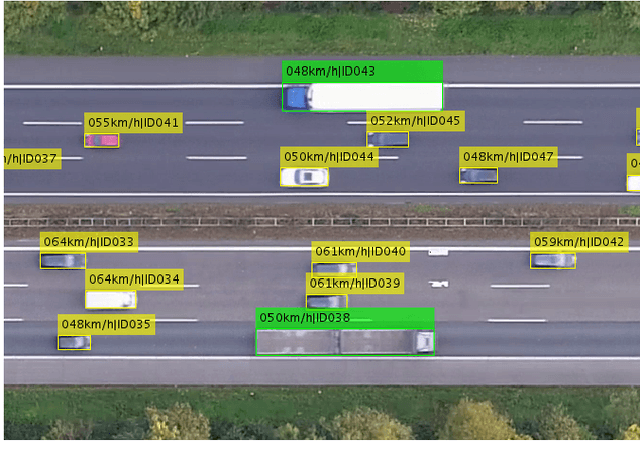
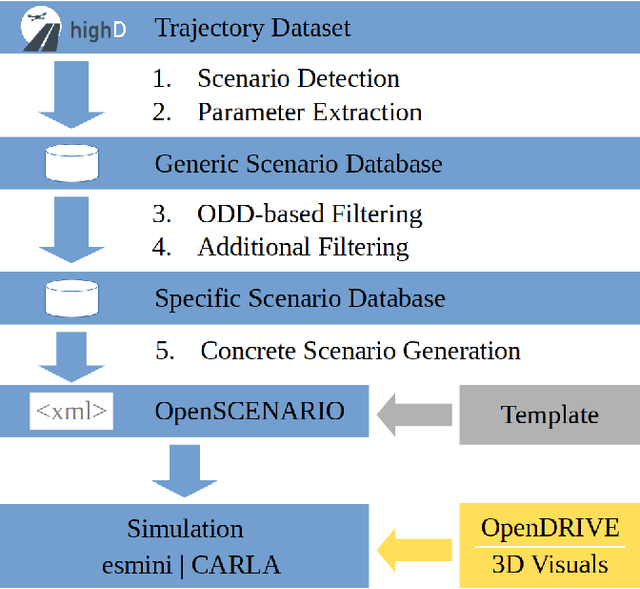
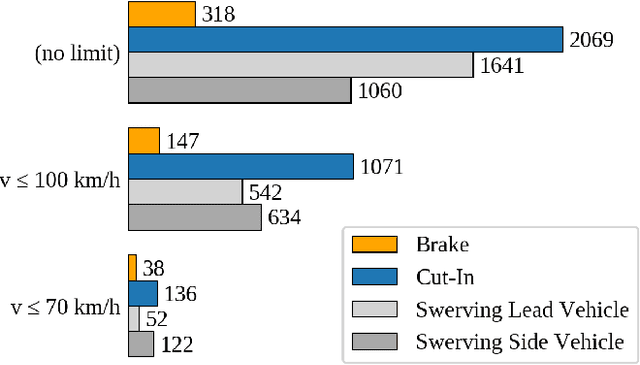
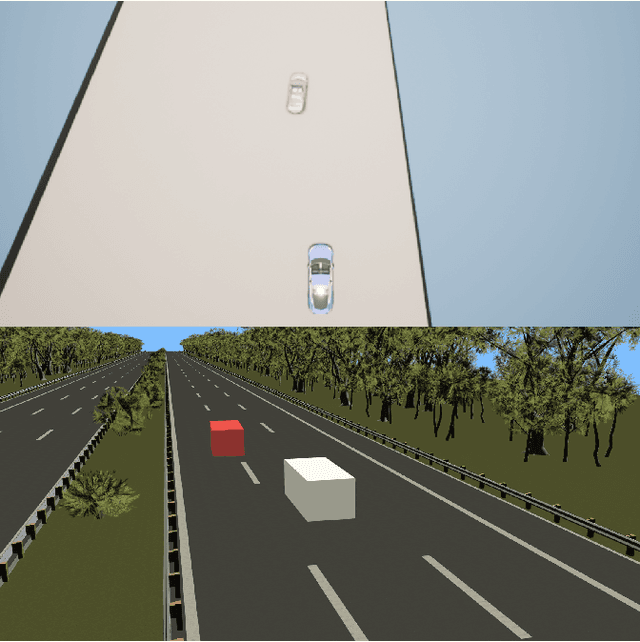
Abstract:With Regulation UNECE R157 on Automated Lane-Keeping Systems, the first framework for the introduction of passenger cars with Level 3 systems has become available in 2020. In accordance with recent research projects including academia and the automotive industry, the Regulation utilizes scenario based testing for the safety assessment. The complexity of safety validation of automated driving systems necessitates system-level simulations. The Regulation, however, is missing the required parameterization necessary for test case generation. To overcome this problem, we incorporate the exposure and consider the heterogeneous behavior of the traffic participants by extracting concrete scenarios according to Regulation's scenario definition from the established naturalistic highway dataset highD. We present a methodology to find the scenarios in real-world data, extract the parameters for modeling the scenarios and transfer them to simulation. In this process, more than 340 scenarios were extracted. OpenSCENARIO files were generated to enable an exemplary transfer of the scenarios to CARLA and esmini. We compare the trajectories to examine the similarity of the scenarios in the simulation to the recorded scenarios. In order to foster research, we publish the resulting dataset called ConScenD together with instructions for usage with both simulation tools. The dataset is available online at https://www.levelXdata.com/scenarios.
The inD Dataset: A Drone Dataset of Naturalistic Road User Trajectories at German Intersections
Nov 18, 2019



Abstract:Automated vehicles rely heavily on data-driven methods, especially for complex urban environments. Large datasets of real world measurement data in the form of road user trajectories are crucial for several tasks like road user prediction models or scenario-based safety validation. So far, though, this demand is unmet as no public dataset of urban road user trajectories is available in an appropriate size, quality and variety. By contrast, the highway drone dataset (highD) has recently shown that drones are an efficient method for acquiring naturalistic road user trajectories. Compared to driving studies or ground-level infrastructure sensors, one major advantage of using a drone is the possibility to record naturalistic behavior, as road users do not notice measurements taking place. Due to the ideal viewing angle, an entire intersection scenario can be measured with significantly less occlusion than with sensors at ground level. Both the class and the trajectory of each road user can be extracted from the video recordings with high precision using state-of-the-art deep neural networks. Therefore, we propose the creation of a comprehensive, large-scale urban intersection dataset with naturalistic road user behavior using camera-equipped drones as successor of the highD dataset. The resulting dataset contains more than 11500 road users including vehicles, bicyclists and pedestrians at intersections in Germany and is called inD. The dataset consists of 10 hours of measurement data from four intersections and is available online for non-commercial research at: http://www.inD-dataset.com
The highD Dataset: A Drone Dataset of Naturalistic Vehicle Trajectories on German Highways for Validation of Highly Automated Driving Systems
Oct 11, 2018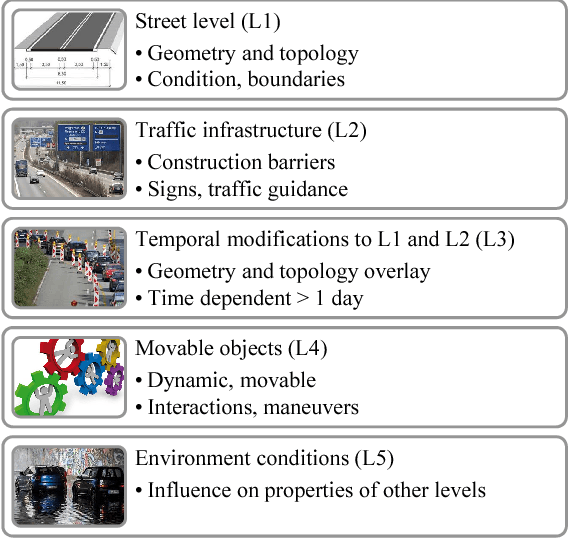
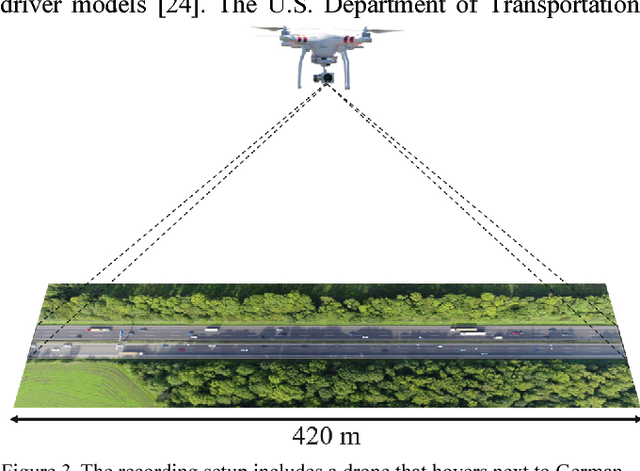
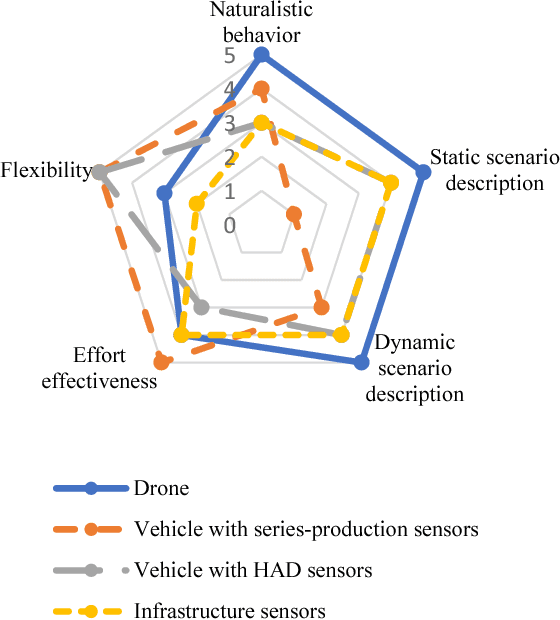
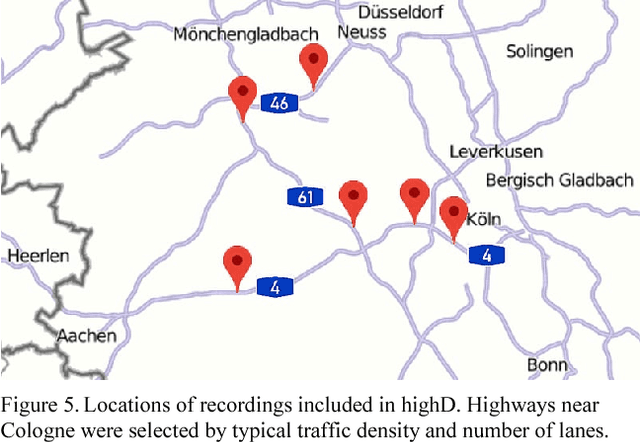
Abstract:Scenario-based testing for the safety validation of highly automated vehicles is a promising approach that is being examined in research and industry. This approach heavily relies on data from real-world scenarios to derive the necessary scenario information for testing. Measurement data should be collected at a reasonable effort, contain naturalistic behavior of road users and include all data relevant for a description of the identified scenarios in sufficient quality. However, the current measurement methods fail to meet at least one of the requirements. Thus, we propose a novel method to measure data from an aerial perspective for scenario-based validation fulfilling the mentioned requirements. Furthermore, we provide a large-scale naturalistic vehicle trajectory dataset from German highways called highD. We evaluate the data in terms of quantity, variety and contained scenarios. Our dataset consists of 16.5 hours of measurements from six locations with 110 000 vehicles, a total driven distance of 45 000 km and 5600 recorded complete lane changes. The highD dataset is available online at: http://www.highD-dataset.com
 Add to Chrome
Add to Chrome Add to Firefox
Add to Firefox Add to Edge
Add to Edge